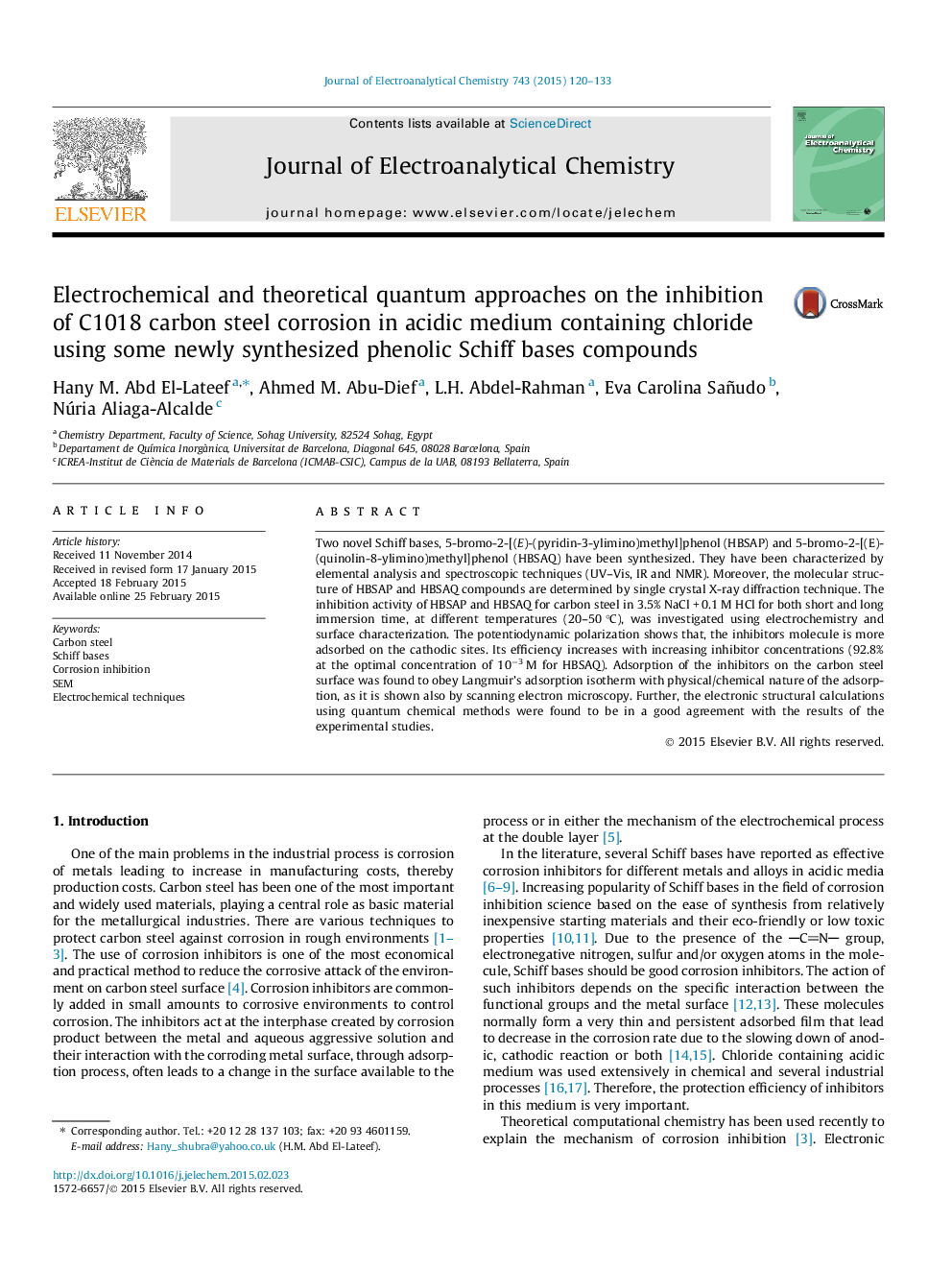| Article ID | Journal | Published Year | Pages | File Type |
|---|---|---|---|---|
| 218419 | Journal of Electroanalytical Chemistry | 2015 | 14 Pages |
•The studied Schiff bases are good inhibitors for carbon steel in 3.5% NaCl + 0.1 M HCl solution.•The inhibition efficiency increases with increasing concentration of the inhibitors.•The adsorption of the inhibitors obeys the Langmuir adsorption isotherm.•The obtained electrochemical data showed good correlation with computational results.
Two novel Schiff bases, 5-bromo-2-[(E)-(pyridin-3-ylimino)methyl]phenol (HBSAP) and 5-bromo-2-[(E)-(quinolin-8-ylimino)methyl]phenol (HBSAQ) have been synthesized. They have been characterized by elemental analysis and spectroscopic techniques (UV–Vis, IR and NMR). Moreover, the molecular structure of HBSAP and HBSAQ compounds are determined by single crystal X-ray diffraction technique. The inhibition activity of HBSAP and HBSAQ for carbon steel in 3.5% NaCl + 0.1 M HCl for both short and long immersion time, at different temperatures (20–50 °C), was investigated using electrochemistry and surface characterization. The potentiodynamic polarization shows that, the inhibitors molecule is more adsorbed on the cathodic sites. Its efficiency increases with increasing inhibitor concentrations (92.8% at the optimal concentration of 10−3 M for HBSAQ). Adsorption of the inhibitors on the carbon steel surface was found to obey Langmuir’s adsorption isotherm with physical/chemical nature of the adsorption, as it is shown also by scanning electron microscopy. Further, the electronic structural calculations using quantum chemical methods were found to be in a good agreement with the results of the experimental studies.
Graphical abstractFigure optionsDownload full-size imageDownload as PowerPoint slide
